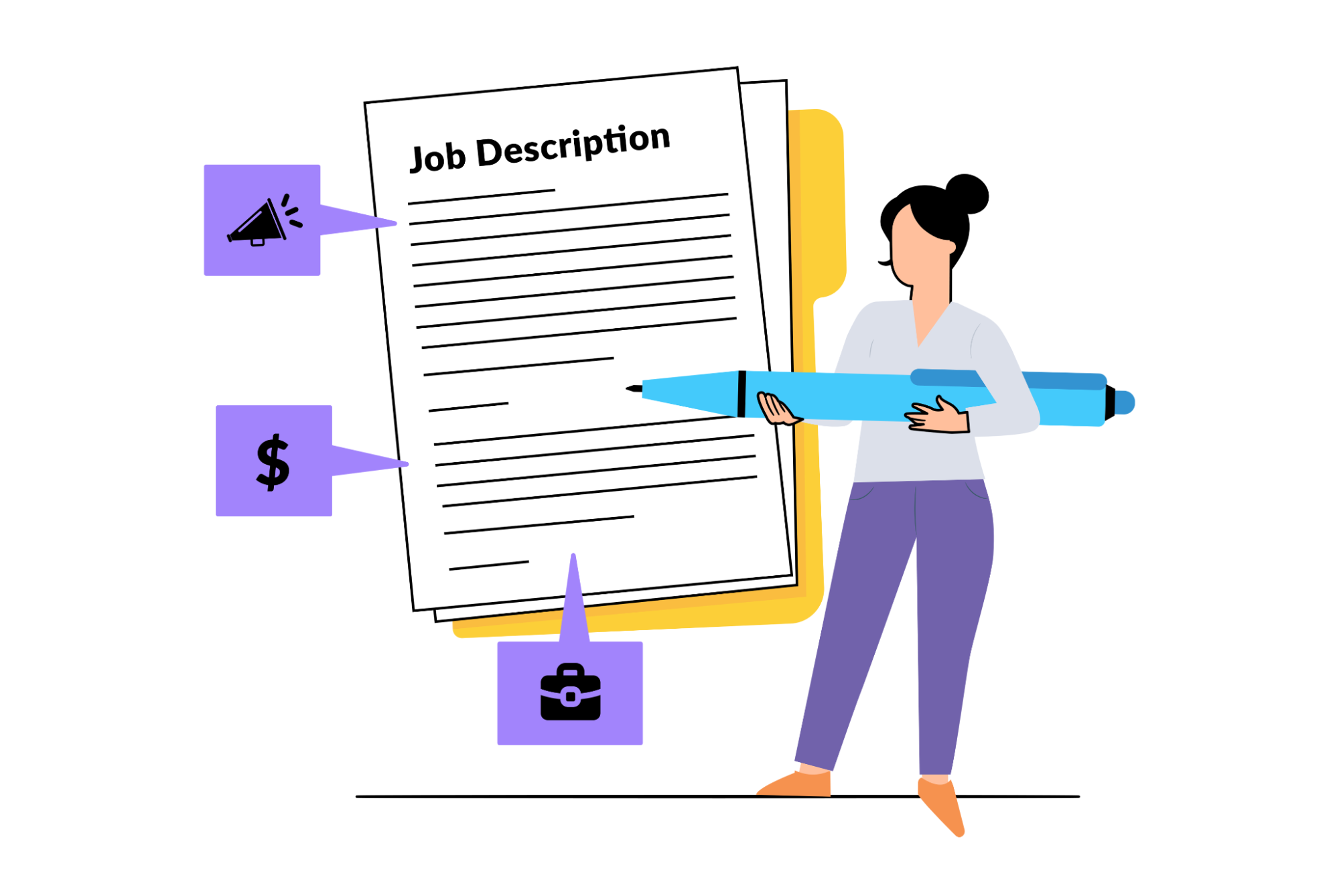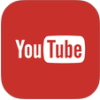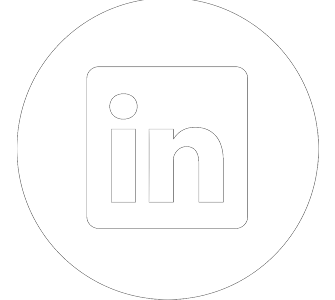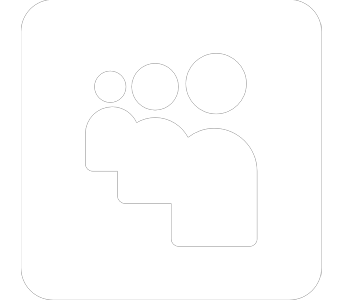
A well-crafted job description is essential for attracting the right talent, setting clear expectations, and ensuring a good fit between the candidate and the role. Small businesses, with their unique cultures and operational requirements, can particularly benefit from precise and compelling job descriptions. This guide will walk you through the process of writing effective job descriptions and introduce tools that can streamline the process, including the DOL O*NET database.
Understanding the Importance of Job Descriptions
Job descriptions serve multiple crucial purposes:
- Attracting the Right Candidates: A clear job description helps attract candidates who are a good fit for the role. It ensures that potential applicants understand what the job entails and can assess their suitability before applying.
- Setting Expectations: It outlines the duties, responsibilities, and expectations, ensuring that both the employer and the employee are on the same page. This can prevent misunderstandings and provide a basis for evaluating performance.
- Legal Protection: It provides a documented outline of the job, which can be important in the event of legal disputes. Clear job descriptions can help protect against claims of discrimination or wrongful termination by outlining the essential functions and requirements of the job.
Steps to Writing an Effective Job Description
- Job Title and Summary:
- Job Title: Should be specific and indicative of the role’s responsibilities. Avoid creative titles that might be confusing to applicants.
- Job Summary: A brief overview of the role, its purpose, and how it fits into the organization. This should be concise, typically 2-3 sentences.
Example: A job title like “Marketing Manager” clearly indicates the role’s responsibilities. The job summary for this role could be: “We are seeking an experienced Marketing Manager to lead our marketing efforts. This role is essential in driving our brand’s growth and ensuring we effectively communicate with our target audience.”
- Key Responsibilities:
- List the primary duties and tasks associated with the role.
- Use bullet points for clarity and start each with an action verb (e.g., “Manage”, “Coordinate”, “Develop”).
- Prioritize responsibilities, listing the most important ones first.
Example: For a Marketing Manager, key responsibilities might include developing and implementing marketing strategies, managing all marketing activities, analyzing market trends, overseeing the creation of marketing materials, collaborating with sales and product development teams, monitoring marketing campaign effectiveness, and managing the marketing budget.
- Qualifications and Skills:
- Education: Specify the required education level.
- Experience: Indicate the amount of experience necessary and in what type of roles.
- Skills: List both hard and soft skills essential for the role.
Example: For the Marketing Manager position, the qualifications and skills could include a bachelor’s degree in marketing or a related field, at least five years of experience in marketing with two years in a managerial role, strong understanding of marketing trends, excellent communication skills, proficiency in marketing software like Google Analytics, and creative thinking.
- Work Environment and Physical Demands:
- Describe the working conditions (e.g., office environment, remote work, travel requirements).
- Mention any physical requirements, such as lifting heavy objects, standing for long periods, etc.
Example: A Marketing Manager might work in an office environment, with occasional travel required for events and meetings. The job might require the ability to work in a fast-paced environment and manage multiple projects simultaneously.
- Compensation and Benefits:
- Provide information on salary range and any benefits offered (e.g., health insurance, retirement plans, paid time off).
Example: The compensation and benefits for a Marketing Manager might include a competitive salary based on experience, health insurance, a 401(k) plan, paid time off, and professional development opportunities.
- Company Overview:
- Briefly describe your company, its culture, and what makes it an attractive place to work.
Example: A company overview might state: “[Your Company Name] is a dynamic and innovative company specializing in [your industry]. We pride ourselves on our collaborative culture and our commitment to excellence.”
- Application Process:
- Clearly outline how candidates should apply, including any required documents (e.g., resume, cover letter).
Example: The application process might be: “To apply, please submit your resume and a cover letter detailing your relevant experience to [application email or link]. Applications will be reviewed on a rolling basis.”

Using Tools to Craft Job Descriptions
Several tools can assist in creating precise and effective job descriptions:
- DOL O*NET: The Occupational Information Network (O*NET) is a comprehensive database of job descriptions and occupational information. It provides detailed insights into the tasks, skills, and requirements for a wide range of jobs.
- How to Use O*NET:
- Visit the O*NET OnLine website.
- Enter the job title in the search bar.
- Review the summary report, which includes tasks, technology skills, knowledge, abilities, work activities, and more.
- Use this information to inform your job description.
Example: For a “Software Developer” role, O*NET provides detailed information on typical tasks like writing code and testing software, technology skills such as proficiency in Java or Python, and necessary knowledge areas like computer systems and mathematics. This ensures your job description covers all necessary aspects.
- How to Use O*NET:
- Job Description Generators:
- TalentLyft: Provides a job description generator with customizable templates.
- Reed.co.uk: Offers a job description template library tailored to different industries and roles.
Example: Using TalentLyft, you can select a template for a “Marketing Manager” and customize it with specific details about your company and the role. This ensures consistency and saves time.
- Competitor Analysis:
- Review job descriptions for similar roles from competitors or larger organizations in your industry. This can provide inspiration and help ensure you are competitive in the job market.
Example: By analyzing job descriptions for “Marketing Managers” at other companies, you can identify common requirements and responsibilities, ensuring your job description is competitive and comprehensive.
Tips for Enhancing Your Job Descriptions
- Be Specific: Avoid vague terms and generalities. Clearly define responsibilities and expectations. For example, instead of saying “responsible for marketing,” specify “develop and implement digital marketing campaigns.”
- Use Clear and Concise Language: Write in a straightforward manner, avoiding jargon that might confuse applicants. Use bullet points for easy readability.
- Highlight Unique Selling Points: Emphasize what makes your company and the role unique. This can attract candidates who are a good cultural fit. For instance, mention your company’s commitment to innovation or your supportive team environment.
- Focus on Growth and Development: Mention opportunities for professional growth and development within your company. This can be a significant draw for candidates looking to advance their careers.
- Regularly Update Job Descriptions: Ensure your job descriptions are up-to-date with the latest responsibilities and requirements. Regular updates can help you stay competitive in the job market and accurately reflect the evolving nature of roles within your organization.
Leveraging DOL O*NET for Detailed Job Insights
The DOL O*NET database can be particularly useful for small businesses. Here’s how you can leverage it:
- Detailed Job Information:
- Use O*NET to get comprehensive information about specific job roles, including typical tasks, required skills, and necessary education and training.
- Identifying Relevant Skills:
- O*NET provides detailed lists of skills and abilities required for different jobs. Use these to ensure your job description accurately reflects the skills needed.
- Benchmarking and Standardization:
- Compare your job descriptions with O*NET standards to ensure they are competitive and align with industry norms.
- Customizing for Your Needs:
- While O*NET provides a great starting point, customize the information to fit your company’s specific needs and culture.
Example: By using O*NET to research a “Customer Service Representative” role, you can find detailed information on the necessary skills like active listening and problem-solving, typical tasks such as managing customer inquiries and resolving complaints, and required knowledge including customer service principles and product knowledge. This helps create a thorough and accurate job description tailored to your company’s needs.

Example Job Description Template
Below is a template you can use to create a job description for any position. This example is for a “Marketing Manager” role:
Job Title: Marketing Manager
Job Summary: We are seeking an experienced Marketing Manager to lead our marketing efforts. This role is essential in driving our brand’s growth and ensuring we effectively communicate with our target audience.
Key Responsibilities: Develop and implement marketing strategies to achieve business objectives. Manage and coordinate all marketing activities, including campaigns, events, digital marketing, and public relations. Analyze market trends and consumer behavior to identify new opportunities. Oversee the creation of marketing materials and content. Collaborate with sales and product development teams to ensure brand consistency. Monitor and report on the effectiveness of marketing campaigns. Manage the marketing budget and allocate resources effectively.
Qualifications and Skills: Bachelor’s degree in Marketing, Business Administration, or a related field. Minimum of 5 years of experience in marketing, with at least 2 years in a managerial role. Strong understanding of current marketing trends and best practices. Excellent communication and interpersonal skills. Proficiency in marketing software and tools such as Google Analytics and HubSpot. Creative thinker with the ability to develop innovative marketing strategies.
Work Environment and Physical Demands: This is a full-time position based in our office. Occasional travel may be required for events and meetings. Ability to work in a fast-paced environment and manage multiple projects simultaneously.
Compensation and Benefits: Competitive salary based on experience. Health insurance, 401(k) plan, and paid time off. Professional development opportunities.
Company Overview: [Your Company Name] is a dynamic and innovative company specializing in [your industry]. We pride ourselves on our collaborative culture and our commitment to excellence.
Application Process: To apply, please submit your resume and a cover letter detailing your relevant experience to [application email or link]. Applications will be reviewed on a rolling basis.
Additional Sections to Enhance Your Job Descriptions
To further enhance your job descriptions, consider adding the following sections:
- Company Mission and Values: Include a section about your company’s mission and core values. This helps potential candidates understand what your company stands for and whether they align with your culture.
Example: “At [Your Company Name], our mission is to provide innovative solutions that empower our clients to succeed. We value integrity, collaboration, and a commitment to excellence.”
- Career Path and Advancement Opportunities: Highlight potential career paths and advancement opportunities within your company. This can be a significant motivator for candidates who are looking for long-term growth.
Example: “We believe in nurturing talent and providing opportunities for growth. As a Marketing Manager, you will have the opportunity to advance to senior leadership roles within our marketing department.”
- Team and Culture: Describe the team the candidate will be working with and the overall company culture. This helps candidates envision themselves as part of your organization.
Example: “You will be joining a dynamic and collaborative team that values creativity and innovation. We foster a supportive environment where everyone’s ideas are heard and valued.”
- Impact and Contribution: Explain how the role contributes to the overall success of the company. This helps candidates understand the significance of their work.
Example: “As a Marketing Manager, you will play a crucial role in driving our brand’s growth and expanding our reach. Your efforts will directly impact our company’s success and market presence.”
- Testimonials and Employee Experiences: Include testimonials or quotes from current employees about their experiences working at your company. This adds a personal touch and can be very appealing to potential candidates.
Example: “Working at [Your Company Name] has been an incredible experience. The team is supportive, and I’ve had numerous opportunities for professional growth.” – Jane Doe, Senior Marketing Specialist
Conclusion
Writing an excellent job description is crucial for attracting the right talent and setting clear expectations. By following the steps outlined in this guide and leveraging tools like the DOL O*NET database, small businesses can craft job descriptions that are clear, comprehensive, and appealing to potential candidates.
Remember, a well-written job description not only helps in recruiting the right candidate but also sets the stage for their success within your company. Regularly updating job descriptions to reflect changing roles and responsibilities will ensure they remain relevant and effective. By using resources like O*NET, job description generators, and competitor analysis, small businesses can stay competitive in the job market and attract top talent.
A detailed job description can make all the difference in finding the perfect candidate who will thrive in your company and contribute to its growth and success. Taking the time to craft thoughtful, detailed, and accurate job descriptions is an investment that will pay off in the quality of hires and their long-term satisfaction and performance.
By integrating these tips and tools into your job description process, you can create compelling and effective job listings that attract the best talent for your small business. A good job description is more than just a list of duties—it’s a powerful tool for communication, alignment, and engagement. Use it wisely, and your small business will reap the rewards of a well-informed and motivated workforce.






